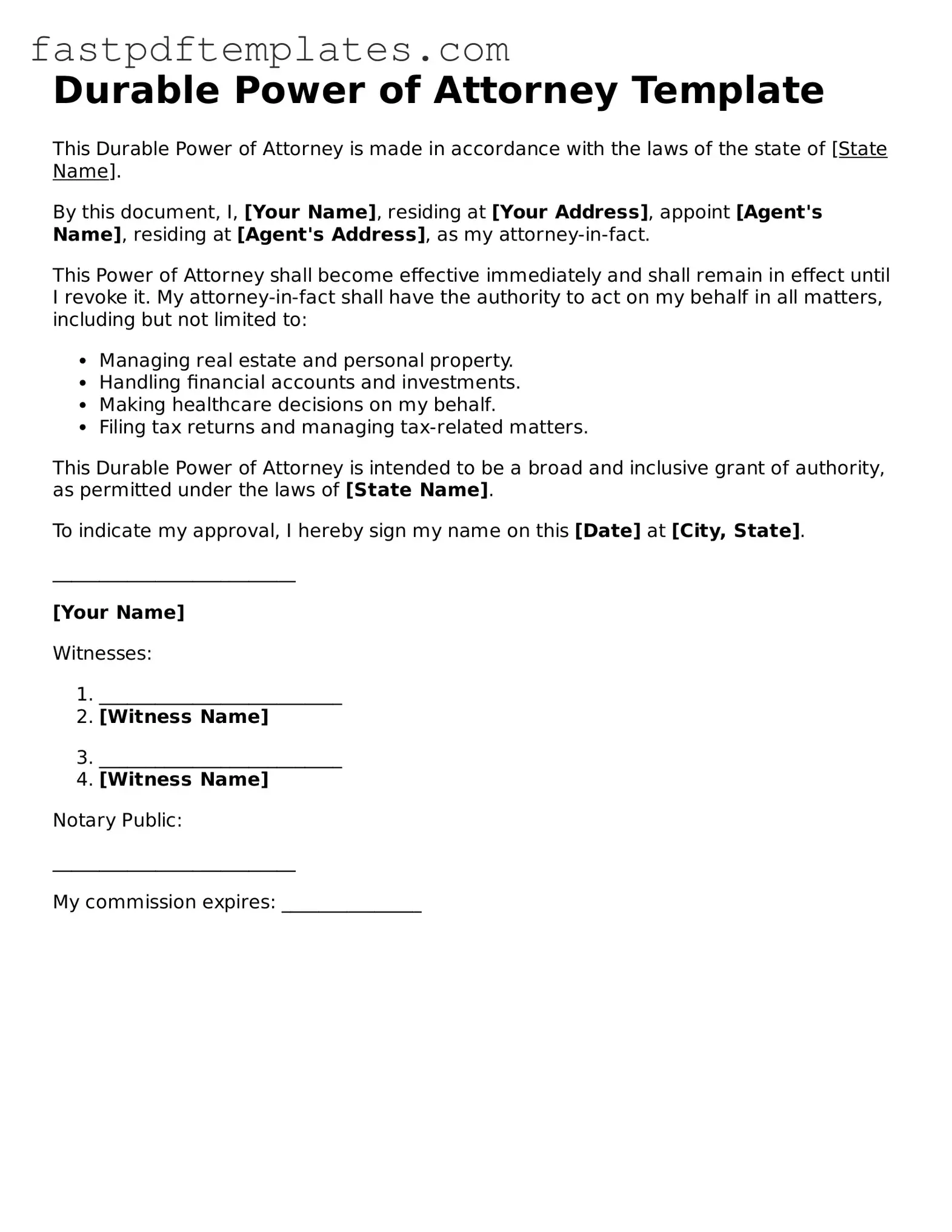Durable Power of Attorney Template
This Durable Power of Attorney is made in accordance with the laws of the state of [State Name].
By this document, I, [Your Name], residing at [Your Address], appoint [Agent's Name], residing at [Agent's Address], as my attorney-in-fact.
This Power of Attorney shall become effective immediately and shall remain in effect until I revoke it. My attorney-in-fact shall have the authority to act on my behalf in all matters, including but not limited to:
- Managing real estate and personal property.
- Handling financial accounts and investments.
- Making healthcare decisions on my behalf.
- Filing tax returns and managing tax-related matters.
This Durable Power of Attorney is intended to be a broad and inclusive grant of authority, as permitted under the laws of [State Name].
To indicate my approval, I hereby sign my name on this [Date] at [City, State].
__________________________
[Your Name]
Witnesses:
- __________________________
- [Witness Name]
- __________________________
- [Witness Name]
Notary Public:
__________________________
My commission expires: _______________
